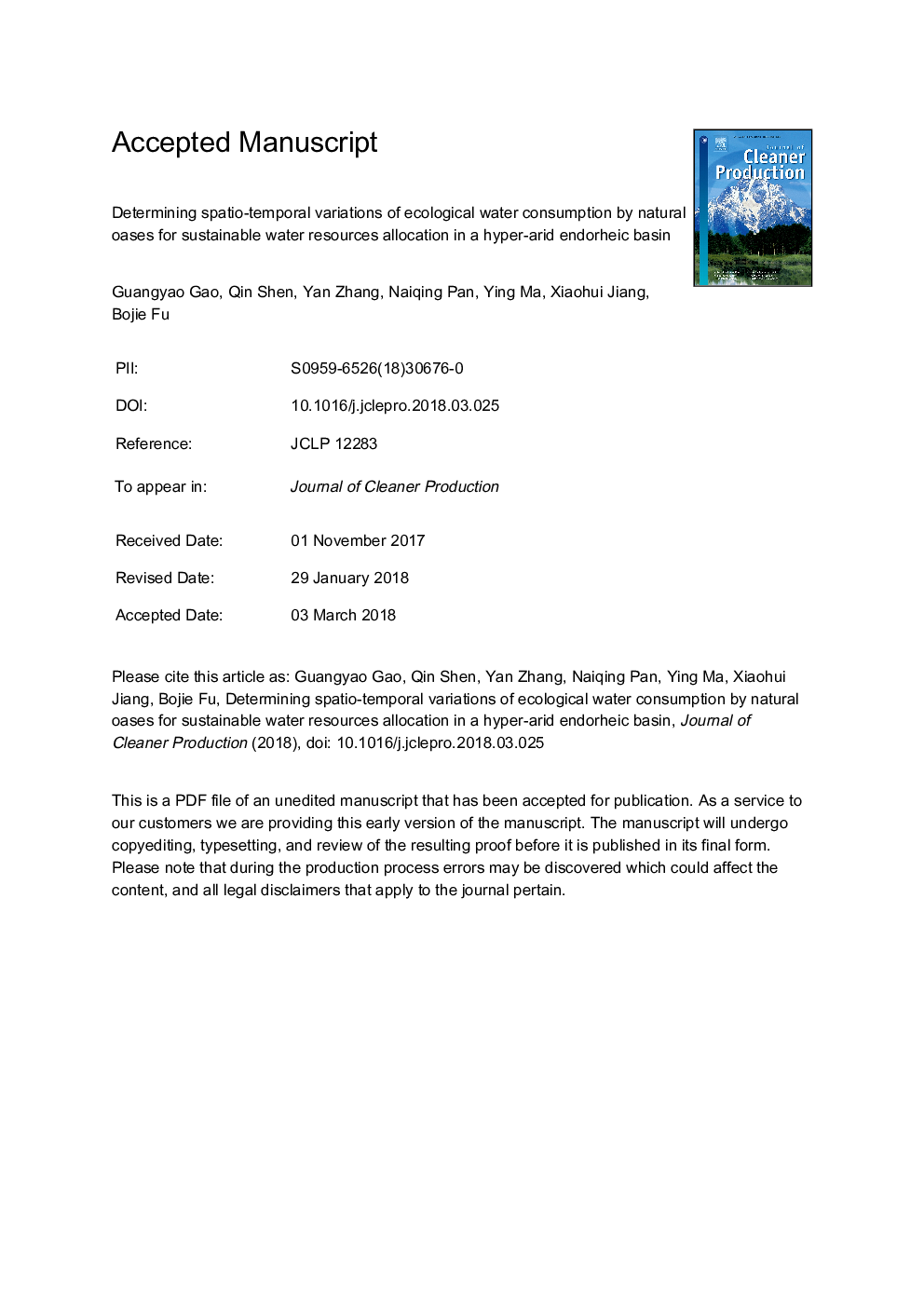| کد مقاله | کد نشریه | سال انتشار | مقاله انگلیسی | نسخه تمام متن |
|---|---|---|---|---|
| 8096368 | 1522068 | 2018 | 50 صفحه PDF | دانلود رایگان |
عنوان انگلیسی مقاله ISI
Determining spatio-temporal variations of ecological water consumption by natural oases for sustainable water resources allocation in a hyper-arid endorheic basin
ترجمه فارسی عنوان
تعیین تغییرات فضایی-تاریخی مصرف آب اکولوژیک توسط حوضچه های طبیعی برای تخصیص منابع آب پایدار در یک حوضه غیرنظامی
دانلود مقاله + سفارش ترجمه
دانلود مقاله ISI انگلیسی
رایگان برای ایرانیان
موضوعات مرتبط
مهندسی و علوم پایه
مهندسی انرژی
انرژی های تجدید پذیر، توسعه پایدار و محیط زیست
چکیده انگلیسی
Natural oases, including desert riparian vegetation and terminal lakes, play an important role in maintaining the stability and development of endorheic river systems in arid areas. Determining the ecological water consumption (EWC) of natural oases is a critical task for achieving sustainable ecosystem restoration and services in endorheic basins. In this study, the evapotranspiration of natural vegetation, evaporation of water area, and seepage in lakes and rivers were considered in the EWC. The Surface Energy Balance System (SEBS) model was combined with Landsat-8 images and eddy covariance flux measurements to calculate the daily EWC of natural oases in the lower Heihe River Basin (northwest China) during 2014 and 2015. The spatio-temporal variations of EWC were investigated in detail. The SEBS model could satisfactorily simulate the evapotranspiration (ET) of forest, shrub, mixed forest and water body with R2 value greater than 0.84 and RMSE value less than 0.9â¯mm/day. The total EWC in 2014 and 2015 was 6.59â¯Ãâ¯108â¯m3 and 7.65â¯Ãâ¯108â¯m3, respectively, and the EWC of the Ejina Oasis accounted for approximately 50% of total value in the study area. The cumulative EWC increased gradually with the distance away from the riverbank as an exponential function and reached the plateau at certain distance. The monthly variation of EWC followed a unimodal curve with the peak in June and July, accounting for 42.16% and 36.28% of annual EWC in 2014 and 2015, respectively. The water balance analysis indicated that the river flow was not sufficient to provide the EWC of natural oases and water requirements of agriculture and social economy, and additional 1.23â¯Ãâ¯108â¯m3 and 2.09â¯Ãâ¯108â¯m3 of groundwater needed to be exploited in 2014 and 2015, respectively. Several strategies for sustainable water resources allocation and ecosystem management in the study area were provided. Overall, this study provides an integrated approach with combinations of multiple techniques and high-resolution data for EWC calculation, which is useful for water footprint analysis and water resources management on the basin scale in arid areas.
ناشر
Database: Elsevier - ScienceDirect (ساینس دایرکت)
Journal: Journal of Cleaner Production - Volume 185, 1 June 2018, Pages 1-13
Journal: Journal of Cleaner Production - Volume 185, 1 June 2018, Pages 1-13
نویسندگان
Guangyao Gao, Qin Shen, Yan Zhang, Naiqing Pan, Ying Ma, Xiaohui Jiang, Bojie Fu,
